Poetic Landscapes
Paintings by April Gornik – pictures of somewhere, anywhere, nowhere – reveal layers of meaning
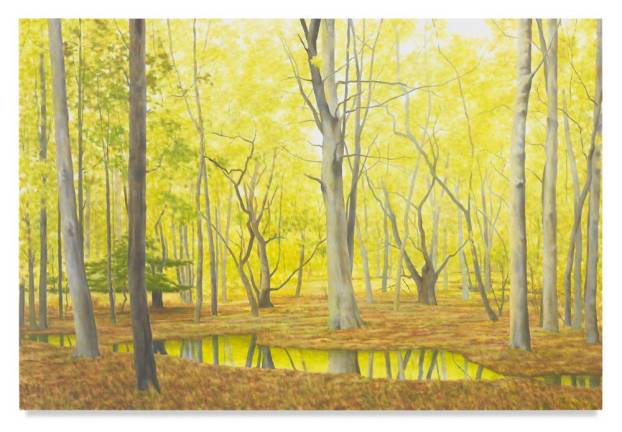
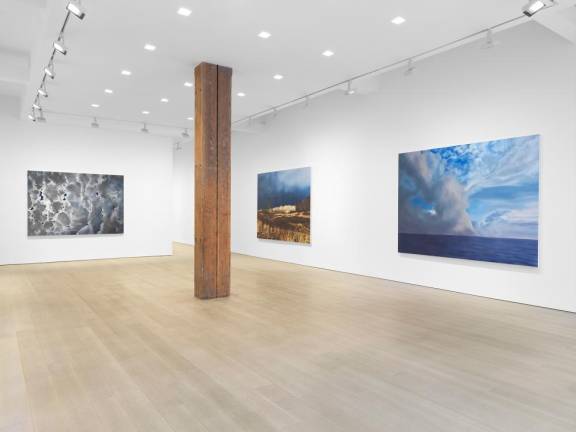
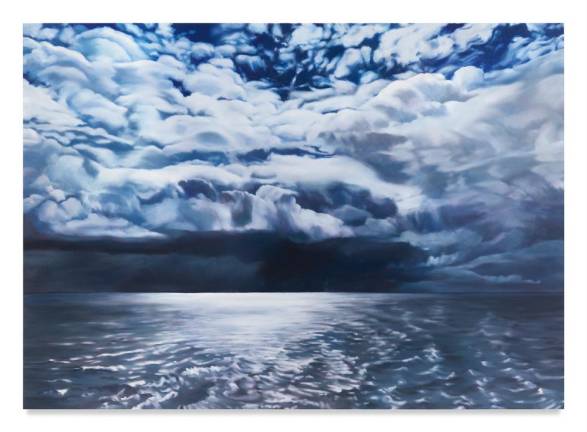
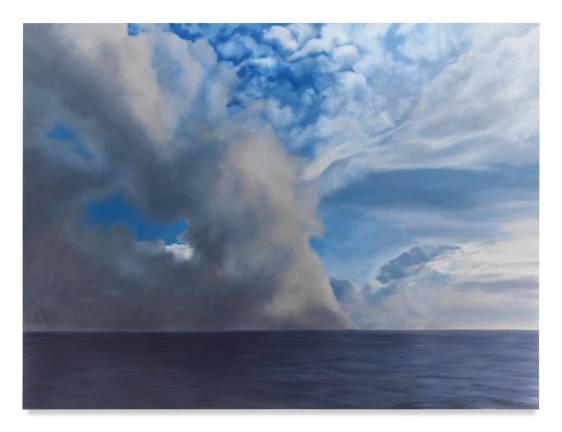
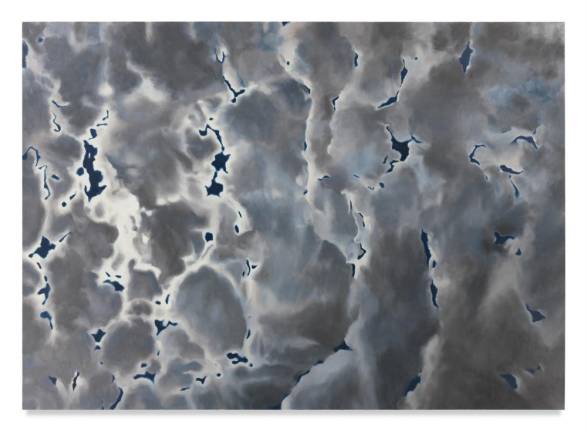
Landscape has been a favorite subject of art for as long as there has been art. Little is more relatable to human beings than the world around us. Yet to see a landscape painting as reproduction of reality is to miss its greatest possibilities. Landscapes can be simultaneously natural, man-made, geographical, political, imagined, and conceptual. They are places filled with contrasts, about creation and destruction, place and time, the finite and infinite.
"Landscapes," says artist April Gornik, "are natural metaphors." Her wall-sized paintings and large charcoal drawings of oceans, mountains, forests and skies are on view through March 28th at Miles McEnery Gallery in Chelsea. It's taken three years for Gornik to prepare for the show, a journey that took the artist to realms both real and imagined. Her landscapes are seductive, and not what they seem to be.
"That's exactly right," she says. "I liken it to when you're having a dream, and you know you're someplace but something is a little off. That conjures a different kind of dimensionality. And, like dreams, I think they should reside partly in your unconscious."
'A Commitment to Wildness'
Specificity is not one of Gornik's goals. These are portraits of places laden with mystery and potential, pictures of somewhere, anywhere and nowhere. Travel, photographs, memories and imagination all go into the evocations of place that are then built in her Long Island studio.
One thing you won't find in Gornik's paintings is people. That's a careful decision because of what she wants to communicate. "I don't want viewers to get a sense that they're supposed to be a certain size in relation to the landscape. I want them to just sort of inhabit them however they enter them. That said, there is the kind of commitment to wildness and things outside of ourselves that I have," she says. "If someone takes them as a remark about the preciousness of wilderness, I'm perfectly happy with that, because you can't say too much how important it is to preserve what is not human."
Contrasts of light and dark, flatness and depth, representation and artifice, create layers in the experience of Gornik's work. They're more abstraction than realism, but constructed from recognizable elements. The way that slanting sunlight hits a field, a patchwork of cottony clouds, the gleam coming off the surface of still water – these are things we know, though we might not have known them this way.
"Spring Light and Still Water" appears to be a sunny spot in the woods, but isn't quite. It's unnaturally silent. Rather than honey golden light, the yellow tones are tart, acidic. Gornik says, "The act of painting is the act of pulling up your subconscious into the present and working with it."
Tension and Repose
The paintings' scale is critical. Standing in front Gornik's landscapes is transportive, both perceptually and emotionally. Up close viewing might give the sense of being at the ocean's edge. From a distance, there's space, but also connection, recognition and yearning. Through diffuse areas of paint as well as muscular gestures, passages of density or voids, quietude or tumult, Gornik creates visions of tension and repose, kind of like the great breathing in and exhalation of nature, itself.
"I think of paintings as living things that, once you put all this time and energy and effort, they actually generate all that back to the viewer, and there's an interchange that happens. If you spend time with a painting, you're enriched in a particularly human way...It bespeaks the otherness of the person that made it, so you're reaching across to this other person. You're reaching across a void, across a distance. So, it kind of reifies existential singularity and separateness, but it also makes this connection. There's an essential poignancy about that, and light and shadow, and transience. That, in a landscape, is all about that kind of reality. And it's a fundamental part of our existence."
Seeing Through the Artist's Eyes
Gornik's thoughts on painting, like her paintings themselves, are poetic. And as with poetry, they reward time spent and reflection. She says that she's creating them as objects of contemplation, leaving the viewer room to explore. Look at them and you may find presence and absence, stillness and life, vastness and smallness, painter and subject, and she hopes, yourself.
"The nicest thing, and it's happened to me a lot, is when people who have gotten to know my work will say 'I saw one of your paintings when I was driving home last night or walking over a bridge.' They'll see through my eyes in some way, and they usually say it with a certain kind of enthusiasm and seem brightened by it. The way I see things helps them see things. I think that's the greatest compliment."
IF YOU GO
What: April Gornik
Where: Miles McEnery Gallery 525 West 22nd Street
When: Through March 28th